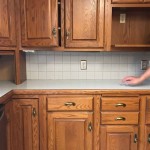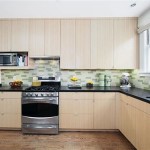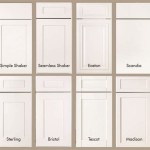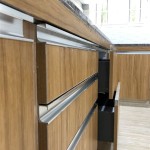Kitchen Cupboard Recycle Bins: Integrating Sustainability into Kitchen Design
The modern kitchen is increasingly recognized as a pivotal space for promoting sustainable living practices. Beyond energy-efficient appliances and water-saving fixtures, the integration of efficient waste management solutions plays a critical role. Kitchen cupboard recycle bins offer a discreet and convenient method for separating recyclable materials from general waste, contributing to a more environmentally conscious household. This article explores the considerations involved in selecting and implementing kitchen cupboard recycle bins, focusing on design, functionality, and their overall contribution to a sustainable lifestyle.
Historically, recycling practices often involved bulky, freestanding bins that occupied valuable floor space and detracted from the aesthetic appeal of a kitchen. Consequently, recycling may have been viewed as inconvenient or visually unappealing. The evolution of kitchen design has addressed these concerns through the development of integrated recycling systems. These systems, particularly those housed within kitchen cupboards, offer a streamlined and space-saving solution that promotes both practicality and visual harmony.
Choosing the right kitchen cupboard recycle bin requires careful consideration of several factors, including available space, household recycling needs, and budget. Measuring the internal dimensions of the intended cupboard is paramount to ensure a proper fit. Furthermore, assessing the volume of recyclable materials generated by the household daily or weekly will dictate the necessary capacity of the bins. Finally, establishing a budget will help narrow down the options based on material quality, features, and brand reputation.
Space Optimization and Design Considerations
One of the primary advantages of kitchen cupboard recycle bins is their inherent space-saving design. By utilizing existing cupboard space, these bins minimize clutter and maximize usable floor area. Several design variations are available to accommodate different cupboard configurations and spatial constraints. Pull-out systems, for example, feature bins mounted on sliding rails, allowing for easy access and removal. These are particularly well-suited for base cabinets situated beneath countertops. Alternatively, swing-out bins are attached to the cupboard door and pivot outward when the door is opened. These designs are often more compact but may require careful planning to avoid interference with adjacent cabinets or appliances.
The material composition of the bin is crucial for both durability and hygiene. High-density polyethylene (HDPE) plastic is a common choice due to its resistance to moisture, odors, and impact. Stainless steel bins offer a more premium aesthetic and are known for their longevity and resistance to corrosion. Regardless of the material, it is essential to select bins with smooth, easily cleanable surfaces to prevent the buildup of bacteria and maintain sanitary conditions.
Beyond the practical considerations, the aesthetic integration of the recycle bin system is an important element of kitchen design. Many manufacturers offer bins in a range of colors and finishes to complement existing cabinetry. Choosing bins that blend seamlessly with the overall kitchen decor can contribute to a more cohesive and visually appealing space. Some systems even incorporate concealed mechanisms that further minimize visual intrusion, allowing the focus to remain on the overall design.
The internal configuration of the recycle bin system can also be tailored to meet specific recycling needs. Multiple compartments allow for the separation of different recyclable materials, such as paper, plastic, and glass. Some systems include dedicated compartments for organic waste composting, promoting even more comprehensive waste management. The size and number of compartments can be adjusted based on the household's recycling habits and local waste management guidelines.
Functionality and User Experience
The ease of use and maintenance of a kitchen cupboard recycle bin system directly impacts its long-term effectiveness. Features such as smooth-gliding rails, secure bin lids, and ergonomic handles contribute to a positive user experience. Bins with tight-fitting lids are particularly important for preventing odors and containing spills. Furthermore, easily removable bins simplify the process of emptying and cleaning, ensuring proper hygiene.
Several innovative features are available to enhance the functionality of kitchen cupboard recycle bins. Soft-close mechanisms prevent slamming and reduce noise, while automatic opening systems allow for hands-free operation. Some systems even incorporate odor-absorbing filters to further minimize unwanted smells. The selection of these features should be based on individual preferences and the specific needs of the household.
Proper ventilation is essential for preventing the buildup of moisture and odors within the cupboard. Some recycle bin systems include built-in ventilation features, such as perforated bin walls or vents in the cupboard door. Alternatively, adding a small, battery-operated fan to the cupboard can improve air circulation and minimize the risk of moisture-related problems. Regular cleaning of the bins and the surrounding cupboard is also crucial for maintaining hygiene and preventing the growth of mold or mildew.
Implementing a clear and consistent recycling system is key to its success. Labeling each compartment with clear instructions on which materials to deposit can help prevent confusion and ensure that recyclable items are properly sorted. Providing accessible information on local recycling guidelines and accepted materials can further improve recycling rates. Engaging all members of the household in the recycling process is essential for fostering a culture of sustainability and maximizing the effectiveness of the system.
The positioning of the recycle bin within the kitchen layout can also impact its usability. Ideally, the bin should be located in a convenient and easily accessible location, such as near the sink or food preparation area. This minimizes the distance that recyclable materials need to be carried and reduces the temptation to simply discard them in the general waste bin. Careful planning of the kitchen layout can ensure that the recycle bin is seamlessly integrated into the workflow and contributes to a more efficient and sustainable kitchen environment.
Environmental and Economic Benefits
The implementation of kitchen cupboard recycle bins offers significant environmental benefits. By promoting the separation and proper disposal of recyclable materials, these bins help reduce the volume of waste sent to landfills. This, in turn, conserves natural resources, reduces greenhouse gas emissions, and minimizes the environmental impact of waste disposal. Furthermore, recycling reduces the need for raw material extraction, conserving energy and reducing pollution associated with manufacturing processes.
Beyond the environmental benefits, kitchen cupboard recycle bins can also offer economic advantages. Many municipalities offer incentives for households that actively participate in recycling programs, such as reduced waste collection fees. Furthermore, by reducing the amount of waste sent to landfills, households can lower their overall waste disposal costs. The initial investment in a kitchen cupboard recycle bin system can be offset over time through these cost savings.
The adoption of kitchen cupboard recycle bins also contributes to a broader culture of sustainability within the household. By making recycling more convenient and accessible, these bins encourage individuals to be more mindful of their consumption habits and waste generation. This can lead to a reduction in overall waste production and a greater awareness of environmental issues. Furthermore, involving children in the recycling process can instill valuable habits and promote a lifelong commitment to sustainability.
The long-term impact of widespread adoption of kitchen cupboard recycle bins is substantial. A significant reduction in landfill waste can alleviate pressure on existing landfill capacity and reduce the need for new landfill construction. This can free up valuable land for other uses and minimize the environmental impact of landfill operations. Furthermore, increased recycling rates can create new economic opportunities in the recycling industry, stimulating job growth and promoting a circular economy.
In conclusion, kitchen cupboard recycle bins are a practical and effective solution for integrating sustainable waste management into the heart of the home. By carefully considering design, functionality, and environmental benefits, homeowners can choose a system that seamlessly integrates into their kitchen and contributes to a more sustainable lifestyle. The thoughtful implementation of these bins not only enhances the efficiency of recycling efforts but also fosters a greater awareness of environmental responsibility within the household and the wider community.

How To Organize Kitchen Cabinets In The 22 Absolutely Best Ways Cabinet Storage Trash Cans Design

Wesco Bio Single Compartment Pull Out Bin 32l 300mm Door Binopolis

Addis In Cupboard Bin 518527

Livingandhome 30l Pull Out Recycling Waste Bin

Waste Disposal Moores Furniture Group

Wood Triple Trash Bin Recycling Storage Shaker Style Tilt Out Can Cabinet

Pull Out Bin 40l Recycle Bins For Kitchen Multi Container Waste Cabinet Cupboard Built In With Recycled Containers

Livingandhome Grey 3 Bins Pull Out Kitchen Cabinet Waste Bin Recycling Separation Container 30l Diy At B Q

Vauth Sagel Es Pro 2 Compartment 42l Recycler Silver Grey 450mm Door Binopolis

Homcom Kitchen Recycle Waste Bin Pull Out Soft Close Dustbin Recycling Cabinet Trash Can Grey 40l 1x20l 2x10l Aosom
Related Posts








